-
Posts
2,482 -
Joined
-
Last visited
Posts posted by Daniel D. Teoli Jr.
-
-
Here is an early computer dating ad from 1969. I didn't know they started that early.
Selection from the Daniel D. Teoli Jr. Print Advertising Archive.
<><><><>
Daniel D. Teoli Jr. Archival CollectionDaniel D. Teoli Jr. Small Gauge Film ArchiveDaniel D. Teoli Jr. Advertising ArchiveDaniel D. Teoli Jr. VHS Video ArchiveDaniel D. Teoli Jr. Popular Culture ArchiveDaniel D. Teoli Jr. Audio ArchiveDaniel D. Teoli Jr. Social Documentary Photography -
When you do your tests, always go the distance...from the alpha to the omega. I tried a few other times with this test, but didn't post them. I found 1 second is too long and .05 seconds is too short. It looks like .20 or .30 of a second per frame is the sweet spot.
-
I tested out this concept in 2 other speeds - .10 seconds & .20 seconds per sample frame.
It is something. You can reduce a 15 or 20 minute film down to a few seconds and still get a decent feel for it.
.10 seconds per frame:
.20 seconds per frame:
Now the only problem is how to do it on a fast and affordable basis. This is especially useful plan if you have many hundred 'pig in a poke' home movies as I do. You can only put so much info in the description. And words can never take the place of seeing it.
Stock footage companies could probably benefit from this technique as well. Both for their own internal use and for their customers use. It would make it easier for their clients to sift through the material to buy. Once the customer finds films with potential they can view the entire reel.
Call it the 'Synopsis of Film' or 'Visual Synopsis of Film.'
In the end we both do the same thing; it is just that I archive films to donate to the historical record, whereas they do it to sell by the second.
-
NSFW
Customer asks for more money from the pawnbroker (Rod Steiger) and show off her breasts and offer sex for the money. Clip also shows nudity in the flashbacks to the German concertation camp in WW2.
One of the earliest box office films to show nudity. Looks to be #2 on the nudity film list.Wikipedia:The distinction of being the first mainstream American actress to appear nude in a starring role went to actress Jayne Mansfield in the 1963 film Promises! Promises!, though her pubic area is never visible on film. The film was banned in Cleveland and some other cities, though later the Cleveland court decided the nude scenes in the film were not lewd. Both the original and an edited version enjoyed box office success elsewhere. As a result of the film's success, Mansfield landed on the Top 10 list of Box Office Attractions for that year. However, Chicago Sun-Times movie critic Roger Ebert wrote, "Finally in Promises! Promises! she does what no Hollywood star ever does except in desperation. She does a nudie. In 1963, that kind of box office appeal was all she had left." Mansfield's autobiographical book Jayne Mansfield's Wild, Wild World—which she co-wrote with Mickey Hargitay—was published directly after the release of the film. It contains 32 pages of black-and-white photographs from the movie printed on glossy paper. Photographs of a naked Mansfield on the set were published in the June 1963 edition of Playboy.The Pawnbroker, released in 1964, breached the Motion Picture Production Code with actresses Linda Geiser and Thelma Oliver (who later became the mystic and yoga teacher Krishna Kaur Khalsa) fully exposing their breasts. Allied Artists refused to cut the film and released it to theaters without a Production Code seal. The nudity resulted in a backlash from moral and religious conservatives, including the Catholic Legion (which by that time had become a virtually powerless fringe organization). However, critical and overall public response was positive, and many Catholics rebuked the Legion's condemnation of the film. The National Council of Churches even gave the movie an award for Best Picture of the Year.Some of the flashbacks are too fast for my liking. But would have to see them in slightly longer time to tell what works best. You have to test these things out. Very easy with digital, not so easy with film.<><><><>Daniel D. Teoli Jr. Archival Collection
Daniel D. Teoli Jr. Small Gauge Film Archive
Daniel D. Teoli Jr. Advertising Archive
Daniel D. Teoli Jr. VHS Video Archive
Daniel D. Teoli Jr. Popular Culture Archive
Daniel D. Teoli Jr. Audio Archive
Daniel D. Teoli Jr. Social Documentary Photography -
The acting genius of Rod Steiger 'Pawnbroker' (1964) clip. His assistant asks him why Jew's are known for being natural businesspeople. This seldom talked about film has some beautiful black and white photography in it.
<><><><>
Daniel D. Teoli Jr. Archival Collection
Daniel D. Teoli Jr. Small Gauge Film Archive
Daniel D. Teoli Jr. Advertising Archive
Daniel D. Teoli Jr. VHS Video Archive
Daniel D. Teoli Jr. Popular Culture Archive
Daniel D. Teoli Jr. Audio Archive
Daniel D. Teoli Jr. Social Documentary Photography -
Flatbed scanned 35mm negative film is about equal to a 3 or 4 mp digital P&S camera...that is it. I'm sure the film fanboys will not agree. But put up or shut up fanboys. I don't pull this stuff out of my ass, as the kids like to say. I shot film for 3 decades starting in 1969 and digital from just before 2000. I also work extensively with film in the Archive. But more important than that, I test and test. My ego does not say...the tests say.
Here is a minuscule recreation of some of the 'film vs digital' tests I had done many years ago. Tumblr deleted all my websites in 2019, so the material is all lost. But luckily, I had it on optical disc with the tests, as it was deleted a long ago from my drives.
I didn't test any chrome films. Someone else will have to do that. Being a documentary photographer, I pretty much used negative film because it has more forgiving exposure latitude when grabbing fast shots on the street or available light photography. Most of my work was with Tri-X, Plus-X, Ilford FP4, HP5. Once in a while I'd shoot some Panatomic-X.
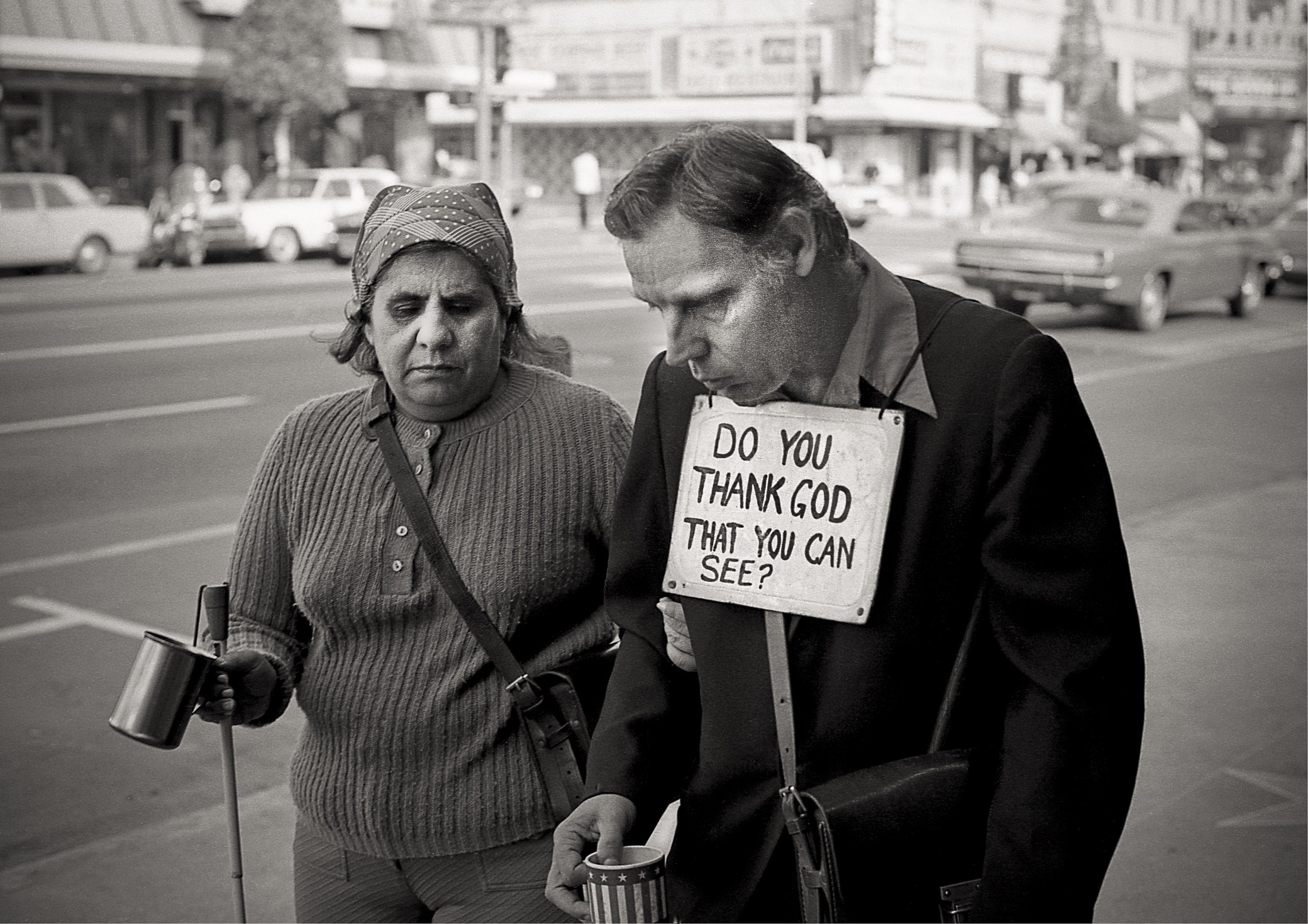
Two Blind Beggars Hollywood, CA. 1972 - D.D.Teoli Jr.
When you are doing fast, candid work you have no time for exposure meters. You guesstimate and shoot. That is not a good formula for shooting chromes. Whether film is not as sharp as digital does not matter that much...unless you demand maximum sharpness. For film has a certain character that is hard to reproduce with digital. You can use all the digital grain you like in post...but it is not organic and does not look the same as film. But you can come close sometimes. So, film and digital both have their pro and con qualities.
Here are a few of the tests comparing Epson flatbed scanned 35mm film to digital. I've shown the full image taken with a crop sensor 6.1mp camera. A few of the close ups will follow. To see them all go to the link below. The film may have come out slightly better with a drum scan, but a better scan just shows the grain sharper...it does not magically make the film super sharp unless the sharpness is there. These tests were done with what the average prosumer person may use, as most people don't have a drum scanner. All tests were done with a tripod.
Epson R-D1s 6.1mp Zeiss 35mm f2
Epson R-D1s 6.1mp Zeiss 35mm f2 cropped
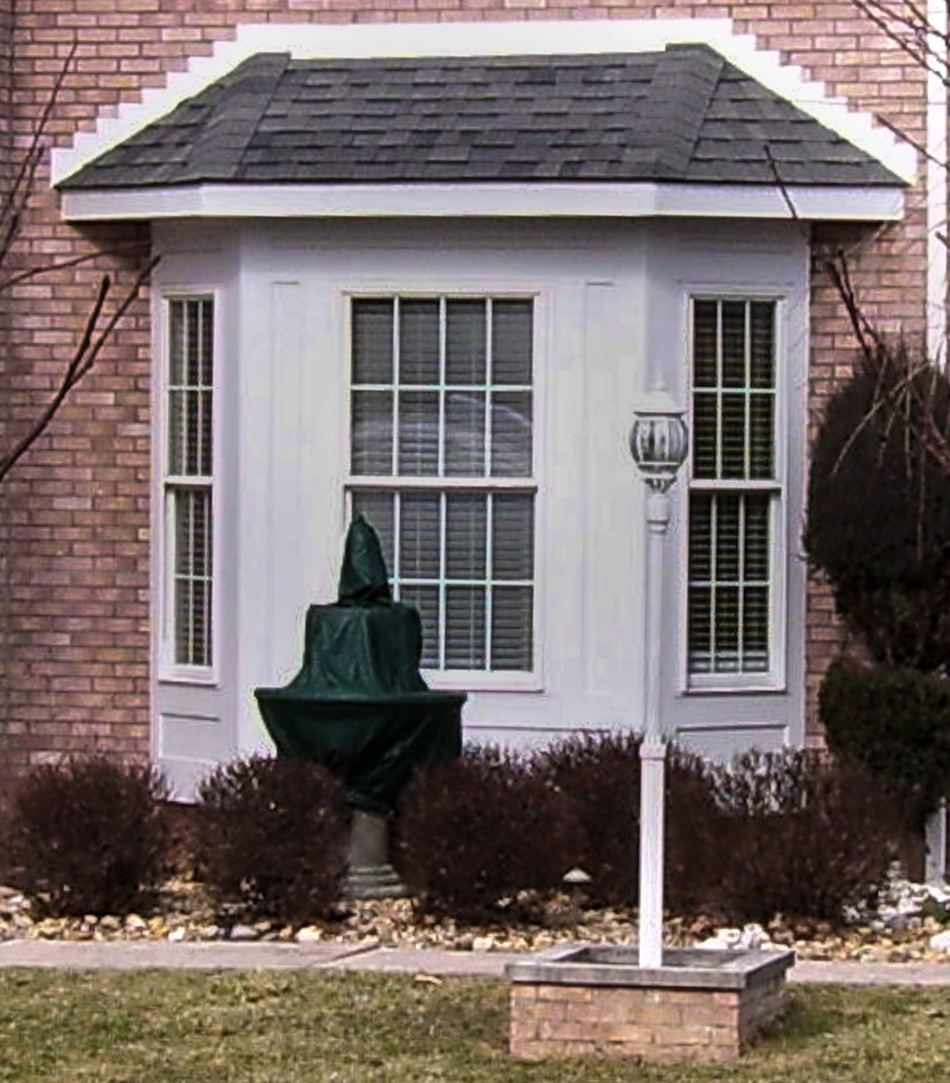
Kodak Easyshare C653 6.1mp P&S cropped
Leica M8 Kodak Ektar 100 film Zeiss 50mm f2 cropped
Leica M8 Tri-X film Zeiss 50mm f2 cropped
(Note: This scan was done by a professional photo processing service and is a sample of the type of scan they give you when they develop your film.)
Leica M240 24mp Zeiss 50mm f2 cropped
I put a handful of the test photos at this link. I had hundreds of tests at the Tumblr covering close up, medium and long-distance comparisons. They all showed the same results...film is pretty low res stuff.
Here is an interesting timeline of Kodak film...
<><><><>
Daniel D. Teoli Jr. Archival Collection
Daniel D. Teoli Jr. Small Gauge Film Archive
Daniel D. Teoli Jr. Advertising Archive
Daniel D. Teoli Jr. VHS Video Archive
Daniel D. Teoli Jr. Popular Culture Archive
Daniel D. Teoli Jr. Audio Archive
Daniel D. Teoli Jr. Social Documentary Photography -
"Buffalo Bill flanked by Pawnee warriors on the left and Lakota warriors on the right during the show's engagement at Erastina on Long Island in 1886."
Rights: Buffalo Bill Museum and Grave
Source photo / text: The William F. Cody Archive
-
On 12/25/2022 at 12:38 PM, Robino Jones said:
Film images are made of grains.
Here's a 16mm frame of a chart I made and scanned in 4K. (can't upload large files here so it is downscaled). I wish interlaced standard def looked like that back in the day ?
Not sure why I'm replying to this troll post but merry xmas everyone!
Edit: ..and this would look even sharper today on my new scanner..
Well, higher res scans do a better job at making the grain sharper. And that is what you want. No one likes mushy grain. If you are comparing apples to apples, digital is much, much sharper than film. You can't compare 35mm film to a 35mm full frame sensor. The digital blows the film out of the water with res.
At one time I had near 50 websites at Tumblr. One of them was on this very topic. But one day, Tumblr pulled the plug on me and deleted all of my websites.
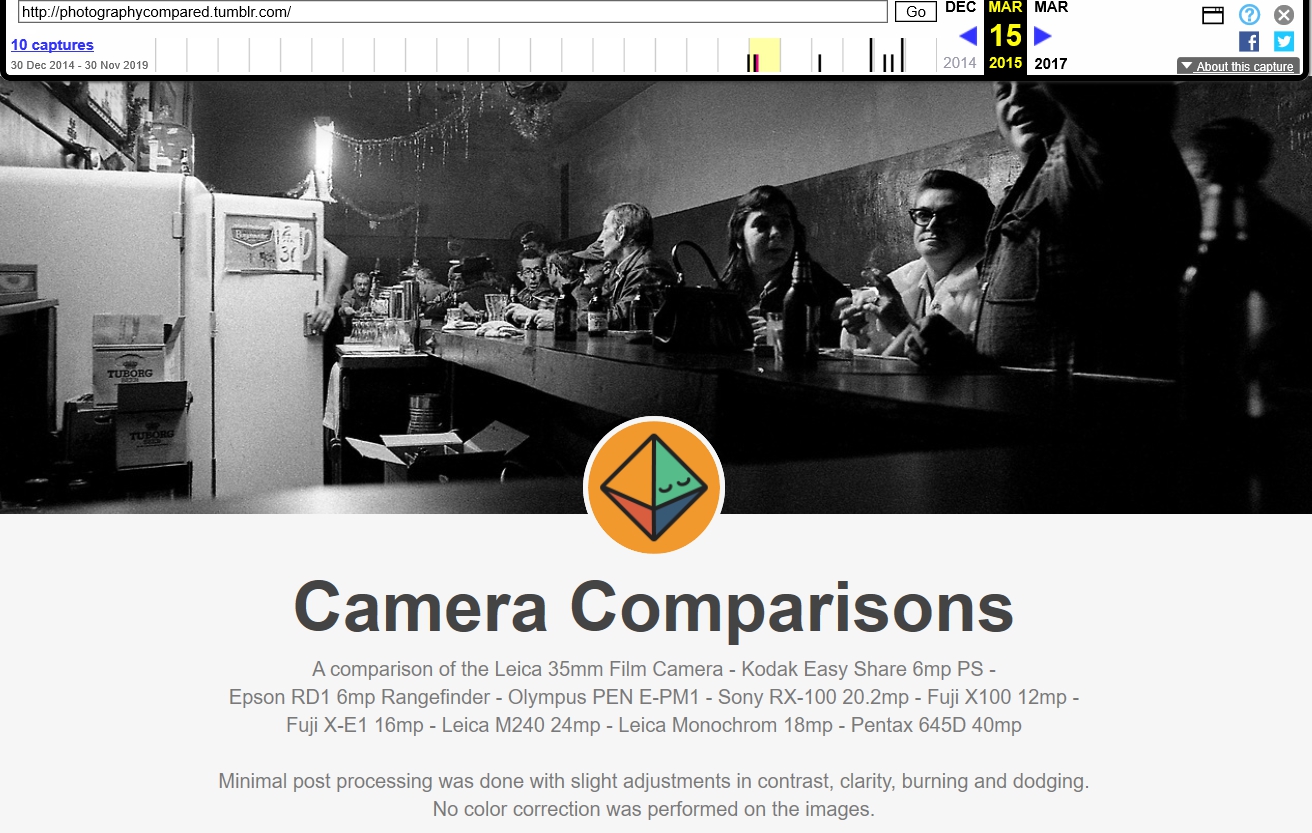
Almost a decade of work lost with all the sites. That is one of the reasons I never finished up my WordPress sites. The Internet Archive deleted my account a short time after Tumblr and many more years of work lost. It was only by chance it was all restored...more or less. The internet is not archival at all!
Anyway, I have to recreate the 'film vs. digital' website. Luckily, I saved it all on optical disc...somewhere. (Now the tests I've done only test negative films and not chromes.)
Film has some beautiful character to it. Personally, I love the grain, but film is just not as sharp as digital...if you are looking for sharpness. Every media has its pros and cons. The type of digital I like is when it looks something like film and not like plasticky digital with noisy shadow detail.

Digital photo 2016 'Little Dicky'
Photo: D.D.Teoli Jr.
Some of the digital sensors can recreate the organic character of film. If you magnify this image, you can see it in this monochrome sensor. No added grain...it is all sensor at a higher ISO. But this is not the kind of sensor you want in a scanner. This sensor also has an issue with burning out highlights.
-
On 4/7/2024 at 8:36 PM, Jefta Varwijk said:
I was actually quite curious if by now, about 18ish months since last post in this thread, there have been more developments concerning the FF HDS+ scanner. Has it become steady?
What do you mean steady?
Does the HDS+ have a jitter problem with registration?
I don't know how the registration works with the HDS+, but the literature said it is laser. From experience with the laser pin gate with the Retroscan, it works very poorly with warped film.
How does the HDS+ handle warped film versus flat film?
-
On 3/15/2024 at 7:57 PM, Dan Baxter said:
Exactly. Roger has ripped off a heap of people, and to most of them $10,000 is a lot of money.
Unfortunately, most of the people that were "dissatisfied customers" didn't want to put their names out publicly, which led to the incorrect perception that everyone was happy. Plenty of customers have said in private though they don't like the way he does business but that they need to be able to still have product support from him.
In Roger's ego-driven Facebook post, he talks as if his compeditors are the "big boy scanners", to use your term. No mention of Filmfabriek, DCS, Blackmagic or Kinetta! Or the fact that the big boy machines are very different now than 20 years ago. They cost way less, they're much simpler, more mechanically reliable, more capable in what they can do, etc. Most film now is over 40 years old, so now they have to be able to do archival film, whreas in the 1990's digital scanning was just for special effects.
The other perception that existed was that they were getting a bargain, because a LaserGraphics ScanStation fully-loaded is $200,000+. Or because FF charge a lot more for the Muller or the Pictor ranges. Yet anyone actually using them to do their best work for paying customers is spending ages working on the scans in post to try and fix them up for their customers. The same is actually true for some of the less capable big boy scanners including the GoldenEye.
Roger takes a cut, and provides a 90 day warranty. You can read the page here, it's still on his website.
LOL. He was on the Kinograph forums, but ran away to his Facebook group when criticised.
I always say how it is. I've talked about problems with the Retroscan from when I first started to use it. But from what I gather here, every scanner has some issues. It is good to discuss the shortcomings so they can be improved or at least warn people before jumping into it.
I think I paid for everything with a credit card, so maybe that was why I had OK luck in getting things. Or it could have been early on he had no problem shipping things. The Retroscan was good for what it was...a cheap scanner. It is better than a Wolverine. You always have to be fair and look at the alternatives...within that price range. So, no use comparing the Retroscan to $$ scanners. It is like comparing a bicycle to a car.
-
You can see that you don't need that many frames from a film to get the flavor of it.

Retroscan output: DDTJRAC
This sample section could be summed up in 2 frames.
Maybe a sampling scanner could be set via footage if it is easier than counting frames. 6", 12", 18", 24" 36"
If you're like me (short on time and overloaded with work and films) and don't want to bother with a Zeiss viewer any longer, just set up the film on the rewinds and loupe every 10 - 20 feet or so.
-
OK, here is a proof-of-concept type of thing...aka a testing of my 'sampling scanner' idea.
Surgery of breasts being reduced.
I tested various speeds and .3 seconds seemed to be the sweet spot between .3, .5 and 1 second for the test times. I had all these photos from when I scanned this film with a Retroscan years ago. I can't remember how many photos were in the scan, maybe 25,000 to 30,000. Whatever it was, it took a long time to grab stills. And these are not regulated as far as number of frames between images - just grabbed some frames at random.
Well, too bad film is a dying area or maybe some company/s would make such a sampling scanner and make it affordable.
-
A good scanner to make for film archives would be a film sampling scanner. Dan Baxter touched on it in another thread. A rough scan to see what you got then work on it later for a better scan if it warrants it. The sampling scanner could be set for scanning every 8, 12, 14, or 24 frames. It would then spit out a MP4 that could be put in the folder with the film record.
The point of it all is, the scanner could be made cheaper than your normal scanner would cost, and allow film archives to see what is on a film and keep a small sampling for the record. In the past if I wanted a sample done, I'd have to look at the individual frame scans and take out frames by hand to make a sampling of the film.
Maybe the sample scanner could have a setting for speed as well when exporting the MP4. Say 50% to 250% range. Just don't get too anal with all the crap where you need remote learning for 2 days to run it. Sure, you can do all this stuff in post. But the point of a sampling scanner is to make the work fast and easy to do right then and there and not let the work pile up to be revisited. Revisiting work is a big problem. Work piles up and new work comes online, you forget what needs to be done with the old work, or at least waste time trying to figure out where you left off.
I don't know how this would work; it is just an idea that may make life easier for the film archivist. I'll have to do the same thing I tell the people here to do...test it out to see what the results looks like. I've made a lot of films with still photos for the entire film, but never with the idea of sampling a film.
<><><><>

New Year's Eve - Skid Row Bar 1971 (Candid)
Photo: D.D.Teoli Jr.
I shot it when I was 17. I looked old for my age and was able to sneak into the bars. Now that I am in my 70's, looking old for your age loses some of its luster.
Daniel D. Teoli Jr. Archival Collection
Daniel D. Teoli Jr. Small Gauge Film Archive
Daniel D. Teoli Jr. Advertising Archive
Daniel D. Teoli Jr. VHS Video Archive
Daniel D. Teoli Jr. Popular Culture Archive
Daniel D. Teoli Jr. Audio Archive
Daniel D. Teoli Jr. Social Documentary Photography
-
I can see why the Pictor Pro is not more popular now. The price in the USA is pretty astronomical. Maybe it is more affordable in Europe. In the USA it is over $22K. Too bad, as it would have made a nice little dedicated tabletop scanner if it was $10K or there abouts.
-
17 hours ago, Perry Paolantonio said:
that wasn't me.
There is no manual for the ScanStation unless that's a new thing. Maybe they made one for the Archivist. There are a few outdated HTML pages you can get to from the application, but they haven't changed much if at all since we bought our scanner 10 years ago.
Their step-by-step installation instructions have always been very good, and very specific. But in terms of usage, they're like most other modern tech companies and don't bother making a good manual.
It is not a direct quote. We were discussing why Lasergraphics didn't answer emails. You were saying you would rather have engineers spend time on development than emails. Very sure it was you. I don't think it was Robert. Does it ring a bell, Perry?
Yes, Lasergraphics must have stupendously improved on their paperwork. Their manual is 104 pages, profusely illustrated and very profession.
-
Just don't understand these companies. It is like pulling teeth to get info online. You can find very little online about the FF 8mm scanners. Perry said they are all engineers and spend their brain power making things and not promoting. OK, great do the engineering, but what about keeping a company afloat with sales? They should hire me and I will flood the internet with it. You know I will! It is almost effortless for me as I produce so much it comes with the territory. But it has to be something that interests me, or I don't care. I'm not looking for a job, I got enuf of my own work to do.
I mentioned in another thread how it is nice to be able to settle on your gear, do your work...and just produce! Well, that is how it will be with scanners. Once acquired, it is production time and not talking time. So, if I was not interested any longer, I would not want a job flooding the internet with info unless it came as a 'natural offshoot' of my own work.
Speaking of offshoots...
I did get a Lasergraphics Archivist instruction catalog. I don't understand how it was mentioned in other threads that Lasergraphics made poor literature. It is outstanding! But maybe they improved?
-
Here is something I found, click on the '...more' section. Maybe they were talking about Dan Baxter's company?
It was done with a Pictor, not the Pro. Looks pretty good, steady, colors, etc.
You can spend a fortune on a little 8mm reel. Before I knew anything about scanning, I had my final exam 8mm reel from Beginning Filmmaking at L.A.C.C. scanned. By the time I got out the door it was $300+. The I paid a ton more to buy the single image TIFF files.
-
Very little of my 8mm is warped, so a warped film gate is not a big deal with the Pictor Pro. But FF should work on making a warped film gate for their HDS+ It is a must! I've got many, many hundred warped 16mm reels.
I just can't understand why there are not more scan examples for all these scanners we talk about. GD, if I was a scanner manufacturer or user, I'd flood the internet with scans. Not that I wanted to for the reason of flooding the internet with them...it would just be a natural offshoot of my work.
-
Here is some stuff...
(59) filmfabriek pictor pro - YouTube
I was thinking of getting a Pictor Pro. I don't have a lot of 8mm film in the Archive. I sold most of it off early on. It is just too low Q for me. But I kept maybe 500- 600 8 and S8 reels. I can buy 8mm for next to nothing...(.50 to $1.50 a reel) A 'pig in a poke' film collector's dream. But I prefer 16mm film.
In any case, It would be nice to have a small scanner that produces decent results that is easy to use. I'm short on space, so the scanner could be pulled out as needed.
-
On 3/12/2024 at 5:09 PM, Andrew Wise said:
I have the first gen launch Pictor, 1080p but with a sound head and the Ricoh lens.
I DIY changed it for the schneider kreuznach current lens. (it’s not a quick swap). The build quality of the machine is excellent, I got to see it all when I pulled it apart to see the lens.The Pictor is an awesome little scanner, and would buy another if I needed. The Pictor pro with the slight resolution bump is temping, but 1080p works very well for 8mm I’ve found when comparing against 4K scans I’ve done on the HDS.
Software is easy to use, all the options you need are there and straightforward.
it will stabilise the image in real time tracking the sprocket hole, similar to Lasergraphics (so I believe, haven’t used one). it works very well to avoid those bumps at splices too.
the sound option is very nice, on mine I can capture real time 18 or 24fps as an uncompressed AVI. Occasionally I’ll get a dropped frame, but I’m using a little HP omen laptop which probably can’t keep up.
you use the companion software FFtranscode to transcode to ProRes or other codecs while it also applies the audio sync and offset.
id normally scan at around 8fps as a DPX sequence so I can use the wetgate and allow it to dry. I’ve been temped to just extend out the film path with some more rollers to allow faster scan speeds with a longer drying path.
the light source is more than bright enough, something that irritated me about a different brand I had. And being RGB you can tune it to the film.
The colours straight from the scanner are ok, but they do need a tweak to get it right. I worked out a preset for the gamma levels that I always run, and I have a lut that I now drop on the files to correct them. If you ever get one, I’m happy to share that with you.
Support from FilmFabriek is good, they reply to my emails same day and will log on remotely if need be. But I’ve never needed support on the Pictor, it’s worked perfectly.
I only needed support on the HDS after I changed the camera to get it setup.
feel free to ask any questions if I didn’t cover anything. I’ve only got one video uploaded that I scanned on the Pictor
Thanks!
What was wrong with the HDS camera?
Is your sample stabilized in post or is it as captured in scanner?
It looks pretty good. I'm no expert, but I think Lasergraphics might be a tad better with the stabilization. But there can be no comparison in price between the 2 scanners, so the Pictor looks very good for what it is.
-
People don't think much of cleaning the photographs before they scan. But RC paper especially attracts a lot of dust. Here is a before and after scan of a RC photo showing how cleaning it affects the scan.

Dirty photo

Cleaned photo
Beside cleaning the originals, the scanner glass has to be clean. But just cleaning it half-ass is not the answer. You have to scan the scanner glass to see how clean it is. Here are 2 scans of the scanner glass. You do it by scanning the open scanner in a pitch-black darkened room. The first scan shows a half-ass clean job, done by say your average jabroni. The second scan show a more thoughtful clean job...after the scanner glass was removed and cleaned. Don't get too anal with the cleaning, sure do a good job. But even if you got an ISO grade clean room...dust and dirt get into the scanner from the originals when you are dealing with archival material. And the scanner itself can make its own dirt from within as it operates. Point is...dirt will find your scanner...just clean the scanner every so often. And you find this out by scanning the scanner itself.
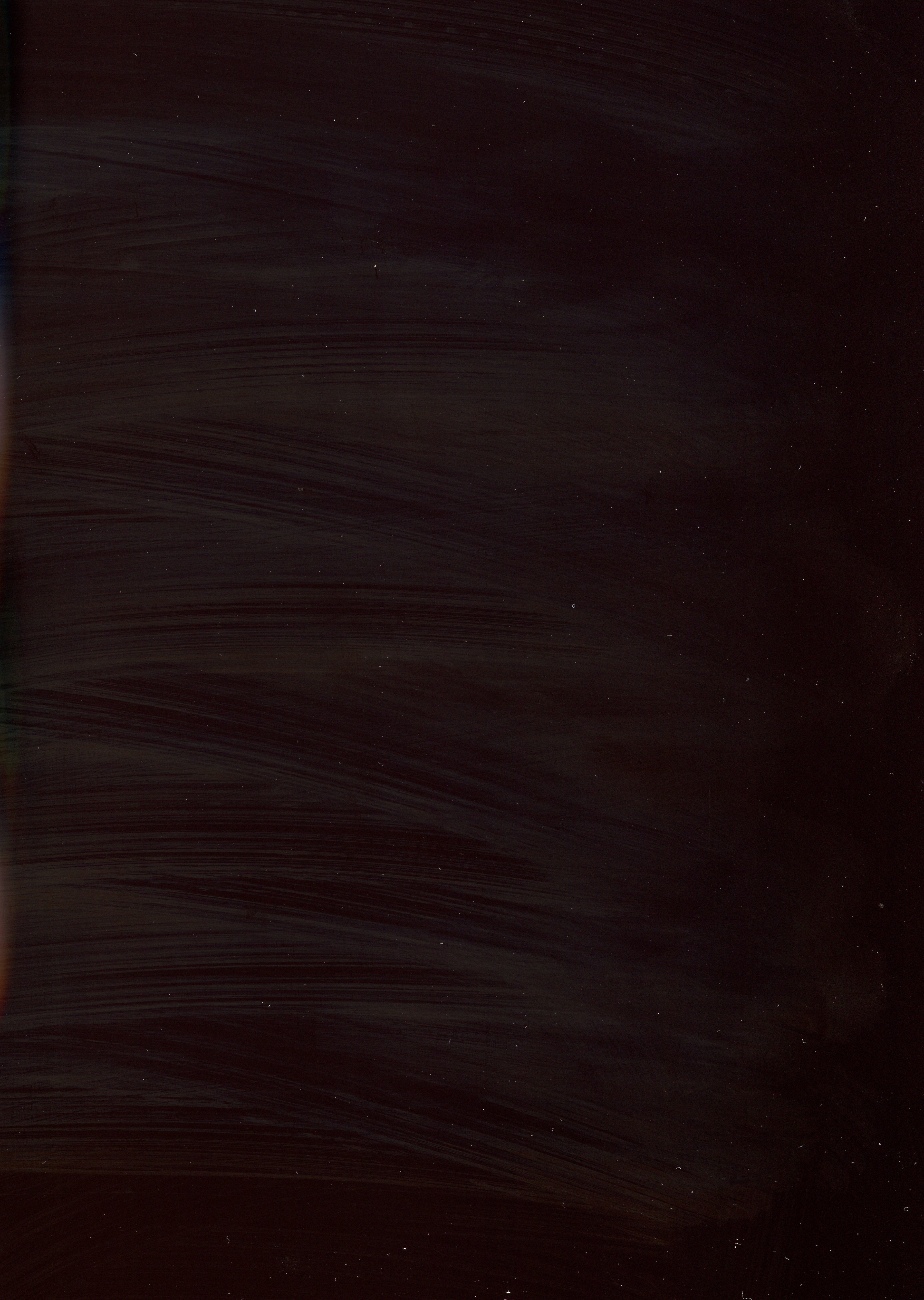
Scanner glass after half-ass clean job.

Scanner glass after removing the glass and a proper clean job. If you have an assistant, have them blow the glass off with compressed air before you reinstall it. I don't, so I make do with what I got. If you scan 3D materials with your scanner it is better to have a dedicated 3D scanner as well as a photo scanner. Sometimes the scanner glass can get scratched from scanning 3D materials.
<>><><>
Daniel D. Teoli Jr. Archival Collection
Daniel D. Teoli Jr. Small Gauge Film Archive
Daniel D. Teoli Jr. Advertising Archive
Daniel D. Teoli Jr. VHS Video Archive
Daniel D. Teoli Jr. Popular Culture Archive
Daniel D. Teoli Jr. Audio Archive
Daniel D. Teoli Jr. Social Documentary Photography -
I've just finished up cutting up about 11 feet of oversize magazines like Life, Look, Saturday Evening Post, Pictorial Review, Modern Priscilla and others. I wanted to collect the advertising and any special articles. I use a large format sheet fed scanner (if I can) and cut off the binding to run the individual pages through the scanner. But it all depends on if the stock is coated and has gloss black ink. If it does not, the pages have to be flat bed scanned as matte black ink or gloss black ink with uncoated paper stock, fouls the scanner rollers.
Anyway, as I would cut off the magazine bindings, I would get inserts and coupons that fell out. After a spell it occurred to me to archive them.
It the 60's they used magnetic ink to sort the coupons as well as punch card holes. Pretty interesting...well maybe interesting if you are an archivist.
Punch card coupons.
Magnetic ink coupon
You'd also see some die cut coupons.
<><><><>
Daniel D. Teoli Jr. Archival Collection
Daniel D. Teoli Jr. Small Gauge Film Archive
Daniel D. Teoli Jr. Advertising Archive
Daniel D. Teoli Jr. VHS Video Archive
Daniel D. Teoli Jr. Popular Culture Archive
Daniel D. Teoli Jr. Audio Archive
Daniel D. Teoli Jr. Social Documentary Photography
-
On 3/20/2024 at 5:02 PM, Robert Houllahan said:
My Scan Station SSP (perzonalz) with HDR has the same build moniker (lg_7_3_349_1221) as all the Scan Stations.
The Archivist has the build as sa_7_3_289_5531 not lg
I probably need to update them soon to the latest builds with DNx
For comparison:
The Arriscan update requires cloning the CERN Scientifc Linux drive from the Sun workstation and sending it to Arri and then they send it back and remote in to finish the update.
Wow! That stuff is complex as hell!
I had no idea you had all these hassles with scanners. They may not be hassles to you, but they would be to me. I thought the scanners were just plug and play more or less. Too bad you can't ever get settled and just produce. It reminds me of the camera fondlers. They would always be looking for the next best camera to come out so they can finally be a star. They could not produce with what they got, they always needed something else. I'm not saying that is you, just saying something I noticed when I was on the photo forums.
It is the same with gun people. It wasn't really like that in the old days. I guess the internet helped produce all these 'addictions to progress.' You especially see it with the 'trigger nuts' that keep changing triggers for the carry guns. Never, ever satisfied. Like all they need is the perfect trigger to stay alive. I remember when Lightroom 5 was just coming out, right away they were debating about what Lightroom 6 will be like. They couldn't concentrate on what they got, always looking down the road.
Now, I'm not anti-progress. Just saying there is a certain joy in being able to concentrate on doing good work with what you got instead of always having to fool with things and constantly think about the future. And from the discussion here, you had better have a lot of computer smarts to run some of these scanners. You will need to be an IT guy to run these top end scanners.
-
On 3/20/2024 at 9:04 AM, Perry Paolantonio said:
This is incorrect. Every 2 months they release updates. We all get the same installer download, it's not specific to the user. There are some things that Lasergraphics has done that are specific to certain installations, but that has nothing to do with the compiled app, it's in config files.
Do you need all the updates Perry? Reminds me of the forced Windows updates. Have you found the updates worthwhile?



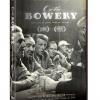
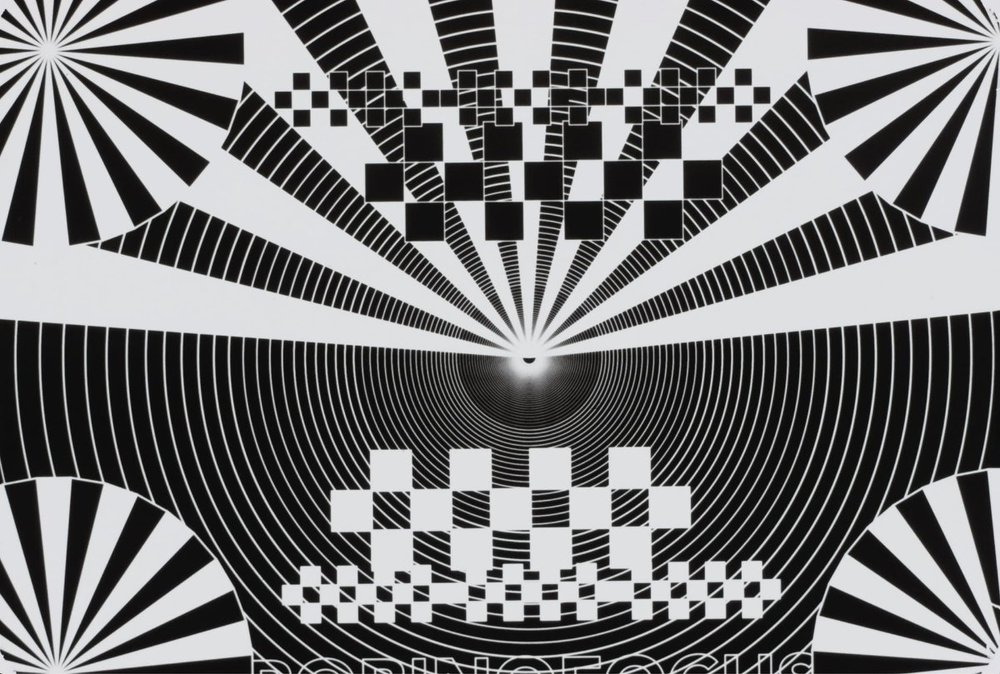
When I go to the forum, I keep getting an 'unsafe' warning.
in Off Topic
Posted
When I go to the forum, I keep getting an 'unsafe' warning and have to click through it to come here. It has been happening for a while now. Maybe 4-5 weeks.